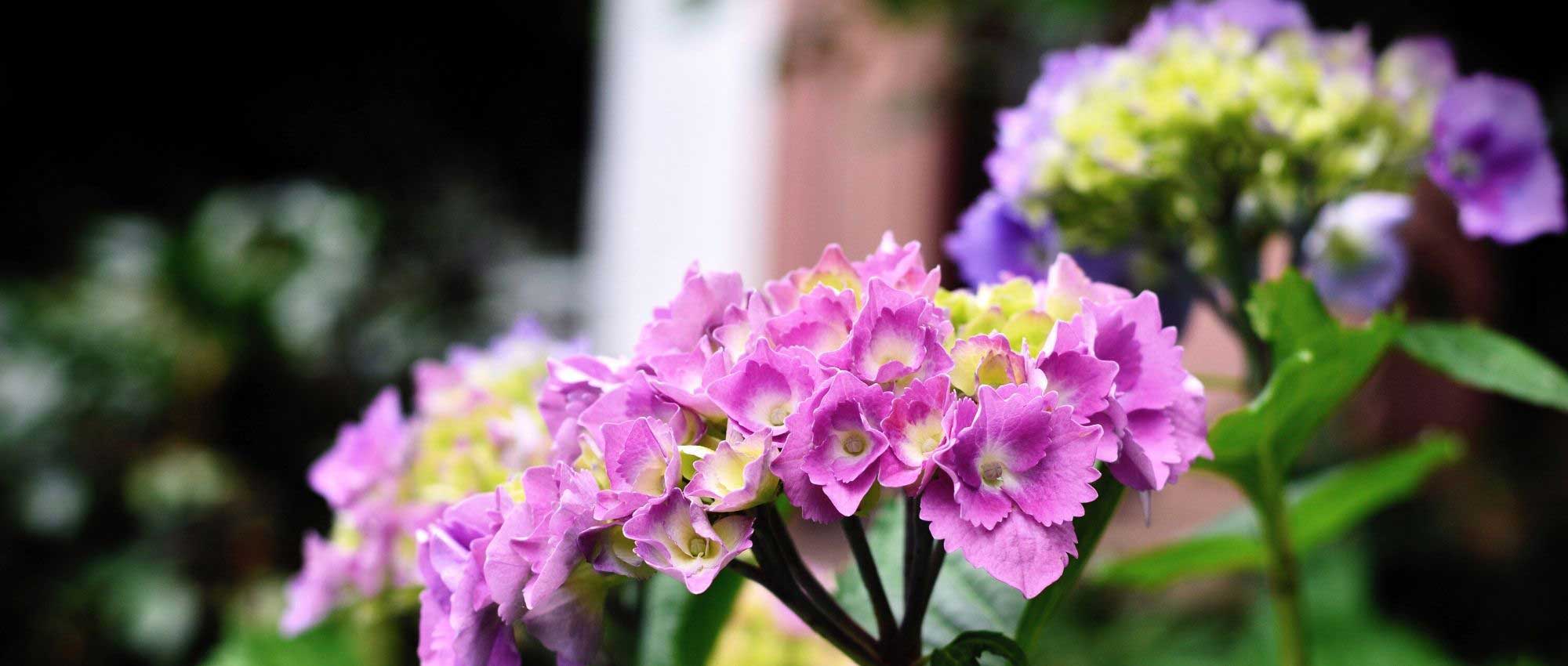
Diseases and parasitic organisms of hydrangea
How to identify and treat them?
Contents
Hydrangea is a very beautiful bush appreciated for its long, generous flowering, from June to September–October. Inflorescences are spherical, flat or conical, and are usually blue, pink or white. There are many species and varieties, even climbing hydrangeas. They are easy to grow and fairly hardy, but can occasionally be affected by some diseases or pests.
The best way to protect your hydrangeas is to grow them in conditions that suit them: plant in fresh, loose, fertile, rather acidic, well-drained soil. Avoid planting too densely so air can circulate. Water in the morning rather than in the evening. Be vigilant as soon as you see first signs of disease, and don’t wait to act. Follow our advice to learn to recognise them and prevent them from appearing!
Botrytis cinerea
Description
Also called grey mould, Botrytis cinerea is a fungal disease caused by tiny fungi and is favoured by a combination of heat and humidity.
Symptoms
- A grey, fuzzy coating appears on leaves.
- Leaves develop brown spots, become necrotic and eventually dry out.
- Flowers or flower buds wilt and rot.
Prevention
- Avoid wetting foliage when watering. Direct the spray at the base of the bush.
- Water in the morning rather than in the evening.
- Plant in well-drained soil.
- Ensure air can circulate: avoid planting too densely, avoid confined environments, and prune hydrangeas occasionally.
- Disinfect pruning tools.
- Avoid fertilisers high in nitrogen.
- Spray with horsetail decoction, nettle manure or garlic decoction.
Treatment
- To limit spread of disease, cut and burn affected parts (do not compost them).
- Treat by spraying a sulphur-based solution.
- You can also use Bordeaux mixture.
For more advice and information, see our sheet “Botrytis or grey mould: control and treatment”
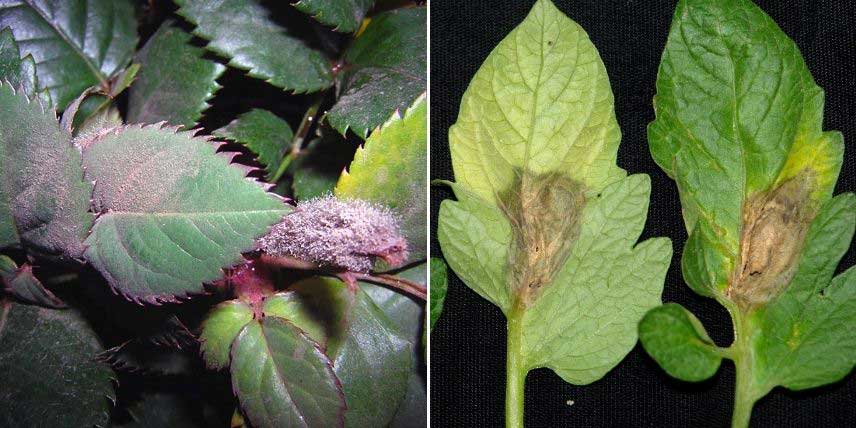
Botrytis cinerea (photo Svetlana Lisova / Scot Nelson)
Read also
Hydrangeas: planting, pruning and carePowdery mildew
Description
This is a fungal disease caused by a fungus. Powdery mildew is unsightly but does not threaten plant life. It is favoured by humidity, confined atmospheres and large temperature swings between day and night.
Symptoms
- Leaves, young shoots and sometimes flower buds become covered with a white, powdery coating.
- In severe infestations, leaves become deformed, necrotic and dry out.
Prevention
Prevention methods are similar to those for Botrytis:
- When planting hydrangeas, place them in a well-ventilated spot and avoid planting too densely. Air must be able to circulate.
- Prune hydrangeas regularly to allow good air circulation.
- When watering, avoid wetting leaves and aerial parts. Direct water to the base of the plant.
- Do not water hydrangeas in the evening. Water in the morning instead.
- Avoid nitrogen-rich fertilisers: they make plants somewhat more susceptible to disease.
- Apply a mulch at the base of the bush.
- Spray your hydrangea with a horsetail decoction or nettle manure.
Treatment
- Cut off and burn damaged parts to prevent the disease from spreading.
- Treat using a sulphur-based solution.
- You can also use bicarbonate of soda, milk, or a garlic oil maceration.
For more advice and information, see our fact sheet “Powdery mildew or white disease: prevention and treatment”
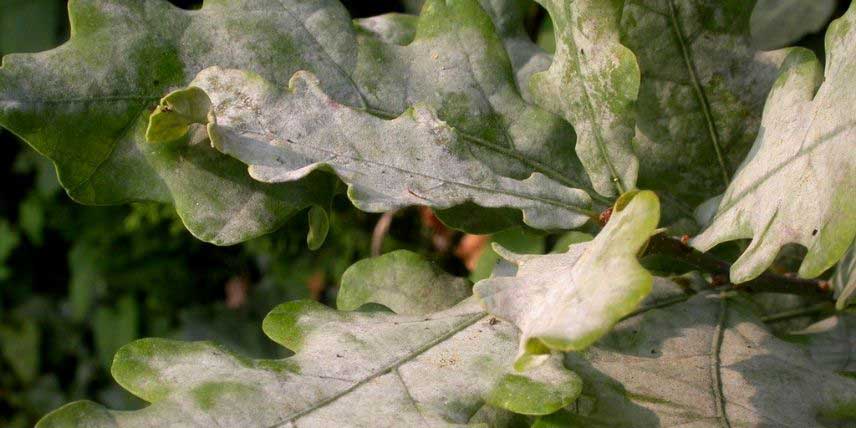
Powdery mildew (photo Gilles San Martin)
Discover other Hydrangeas
View all →Available in 1 sizes
Available in 1 sizes
Available in 1 sizes
Available in 1 sizes
Available in 1 sizes
Available in 2 sizes
Available in 2 sizes
Available in 2 sizes
Available in 1 sizes
Available in 2 sizes
Phytophthora
Description
This fungus enters young plants through wounds and develops particularly at roots and collar. It spreads notably via water or through use of unsterilised tools. Spores of the fungus can remain for several years in the soil before infecting roots. Not a very common disease, but quite serious and may lead to death of bush.
Symptoms
Foliage discolours and dries out, as if bush were dying of thirst. Bush gradually withers.
Prevention
- Plant in well-drained soil, and avoid planting too densely.
- Take care not to damage the collar.
- Disinfect pruning tools.
Treatment
Unfortunately there is little to be done against Phytophthora. Cut and burn affected parts or entire bush, and do not replant in that spot.
Discover our dedicated fact sheet “Phytophthora: identify, prevent, control”
Read also
How to grow hydrangeas?Foliar spot diseases: Ascochytosis, Cercospora leaf spot, Septoria leaf spot
Description
These diseases are also caused by fungi (Ascochyta hydrangeae, Septoria, etc.). They are favoured by warmth and humidity, particularly by frequent rain in spring. These diseases are unsightly and slightly weaken the bush, but they are not lethal for hydrangeas.
Symptoms
- Brown, circular spots appear on leaves. Usually the centre of the spot is paler.
- If attack is severe, affected leaves may fall.
Prevention
- Prepare a horsetail decoction.
- Avoid excess moisture, and avoid wetting foliage when watering.
Treatment
- Remove damaged leaves.
- Use a copper- or sulphur-based fungicidal treatment.
- If the disease persists, check that conditions (soil, exposure, etc.) suit the hydrangea, and move it if necessary.
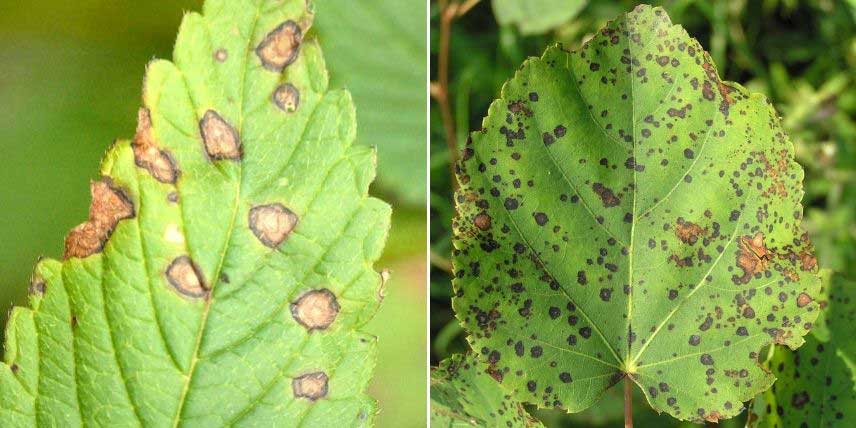
Ascochytosis and cercosporosis (photo James K. Lindsey / Beentree)
Pulvinaria scale insects
Description
Pulvinaria mealybugs (Pulvinaria hydrangeae) are small white insects with a cottony appearance. They attach mainly to undersides of leaves and pierce the bush to feed on sap. They are also called woolly mealybugs. They excrete honeydew, a sticky substance that can lead to sooty mould.
Symptoms
- You may observe mealybugs on undersides of leaves and on stems; they form small white cottony clusters.
- Hydrangea is weakened and less vigorous.
- Most affected leaves eventually dry out and fall.
- Ants may sometimes be seen feeding on honeydew excreted by mealybugs.
- Sooty mould may appear. This fungus forms a black deposit covering leaves, limiting photosynthesis.
Treatment
- Remove mealybugs manually.
- Make a solution by diluting a little black soap, vegetable oil and 90% alcohol in one litre of water. Soak a cloth in this solution and apply it to foliage.
- In case of heavy infestation, we recommend cutting off the most affected parts and burning them (do not compost them).
For more information and advice, see our fact sheet “Mealybugs: identification and treatment”
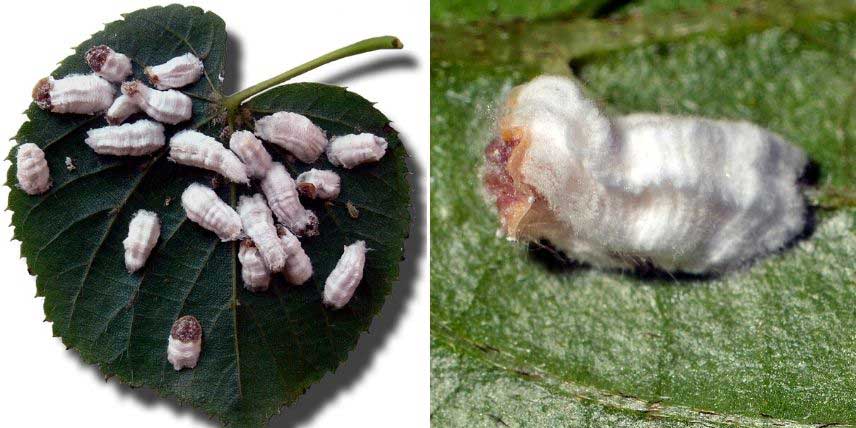
Pulvinaria mealybugs (photo Lamiot / Christophe Quintin)
Red spider mites
Description
Also known as web-spinning tetranychids, red spider mites are small mites difficult to see with naked eye, which settle on leaves and stems and pierce tissues to extract sap.
Symptoms
- Leaves bear small yellow or discoloured spots.
- Fine webbing sometimes visible on leaves and stems, somewhat resembling spider webs.
- Hydrangea is weakened and growth slows.
Treatment
- Red spider mites dislike humidity: we recommend spraying water on foliage.
- Prune and burn most affected parts.
- In case of severe infestation, spray a garlic infusion, nettle manure or a pyrethrum-based product.
- As a last resort, use an acaricide.
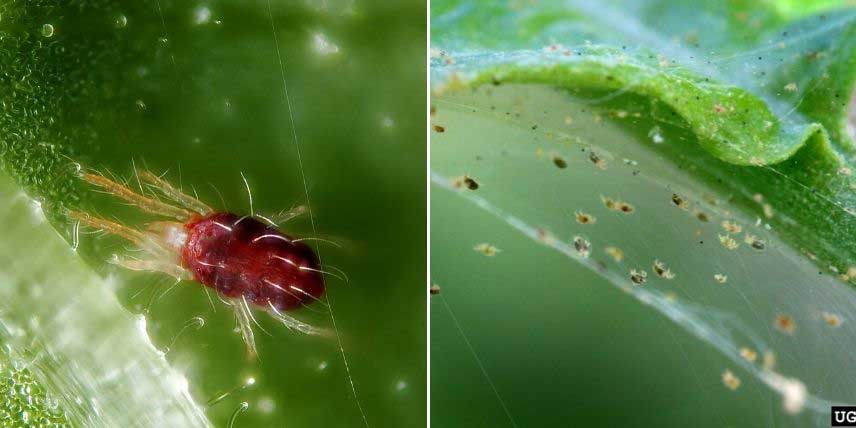
Red spider mites (photo Gilles San Martin / David Cappaert)
Chlorosis
Description
Chlorosis is not really a disease, but a sign of iron deficiency, which occurs in soil that is too calcareous. Lime in soil blocks iron absorption by the plant, causing leaf discolouration as plant struggles to produce chlorophyll for photosynthesis.
Symptoms
- Leaves discolour and turn yellow between veins, while veins remain green.
- Hydrangea becomes weakened and struggles to grow.
Prevention
- Plant hydrangeas in acidic substrate. If soil tends to be calcareous, consider growing hydrangeas in pots in a mix of potting compost and heather soil.
- You can also choose hydrangeas tolerant of calcareous conditions, such as Hydrangea quercifolia, Hydrangea paniculata and Hydrangea arborescens!
- Water with rainwater rather than tap water, which may be too calcareous. You can also neutralise lime by adding a little white vinegar to the water.
- Add a little heather soil around hydrangea bases each year.
Treatment
- If these preventative measures are not enough, use iron chelate. In this form, iron is easily taken up by plants. This restarts chlorophyll synthesis and quickly restores green colour to foliage.
- Use nettle manure: rich in iron and mineral elements, it naturally has an anti-chlorosis effect.
- However, for a more lasting solution, improve soil by adding heather soil and water with non-calcareous water, or possibly grow hydrangeas in pots in a suitable substrate.
Discover our factsheet “Iron chlorosis: Prevention and treatment”

Chlorosis on a hydrangea and a hibiscus (photo Cultivar413 / Malcolm Manners)
- Subscribe!
- Contents
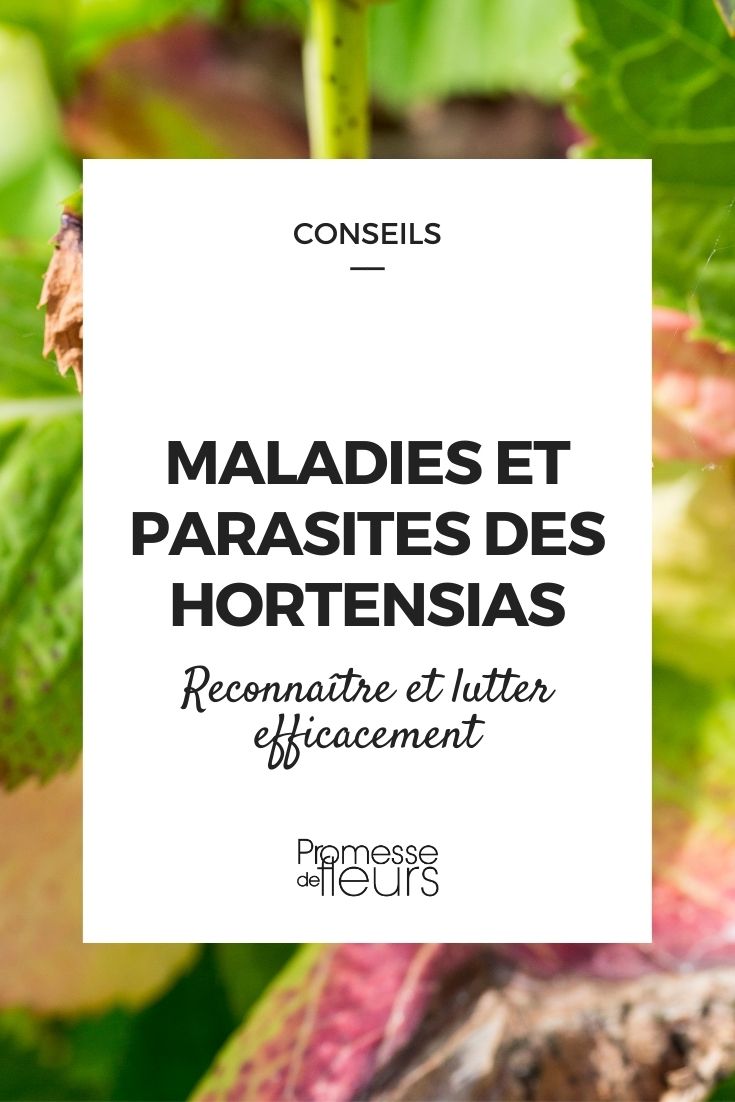































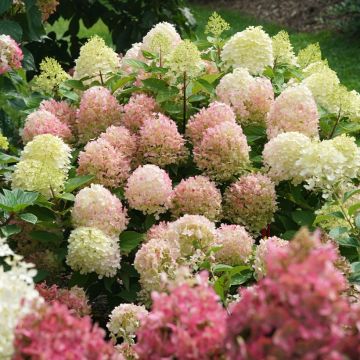
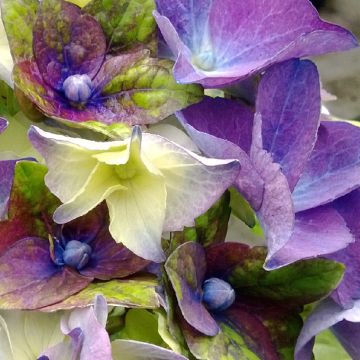
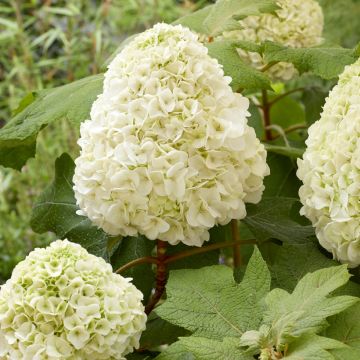

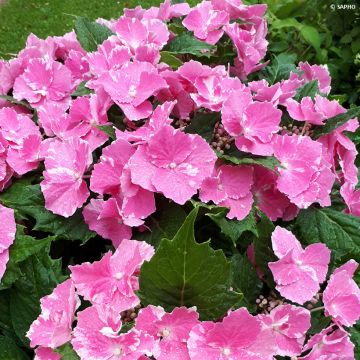
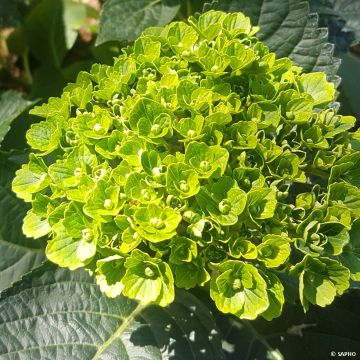
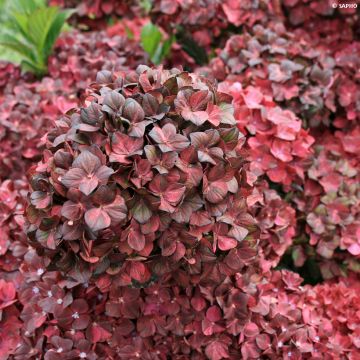
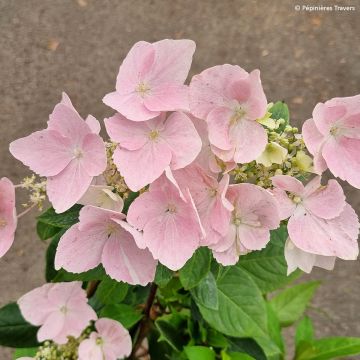
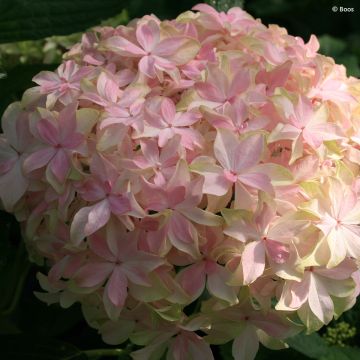
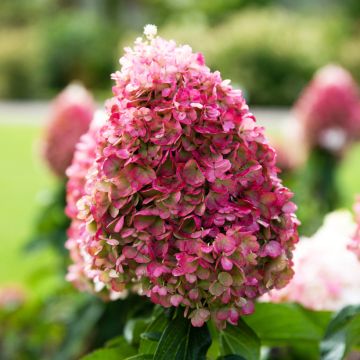
Comments